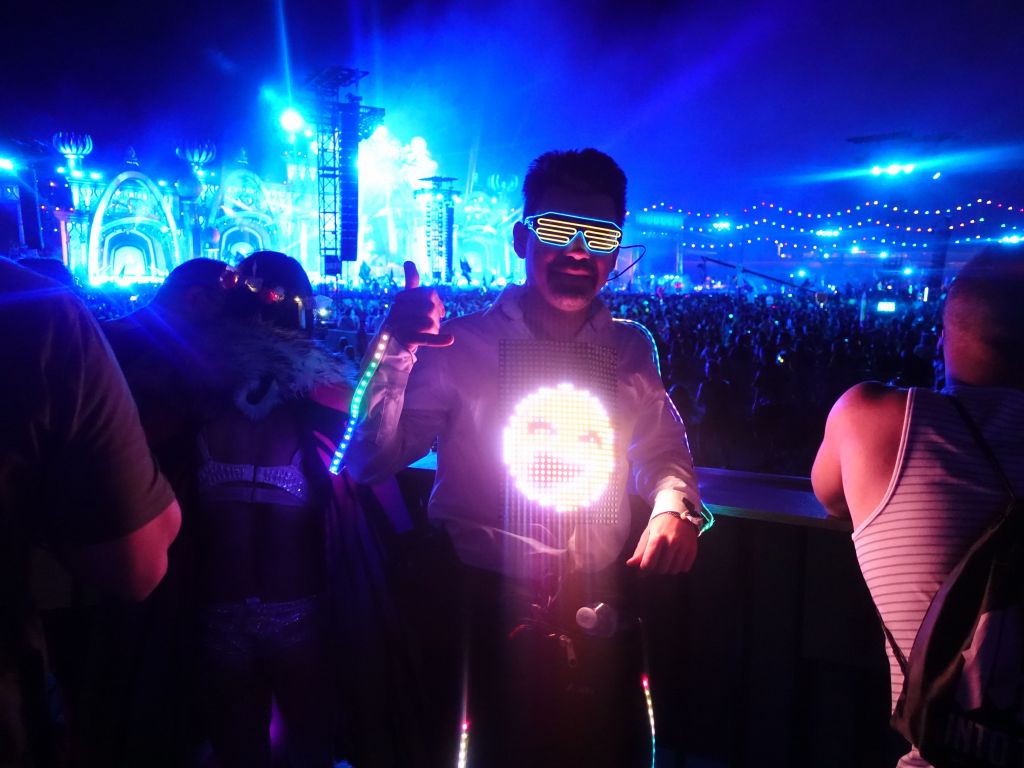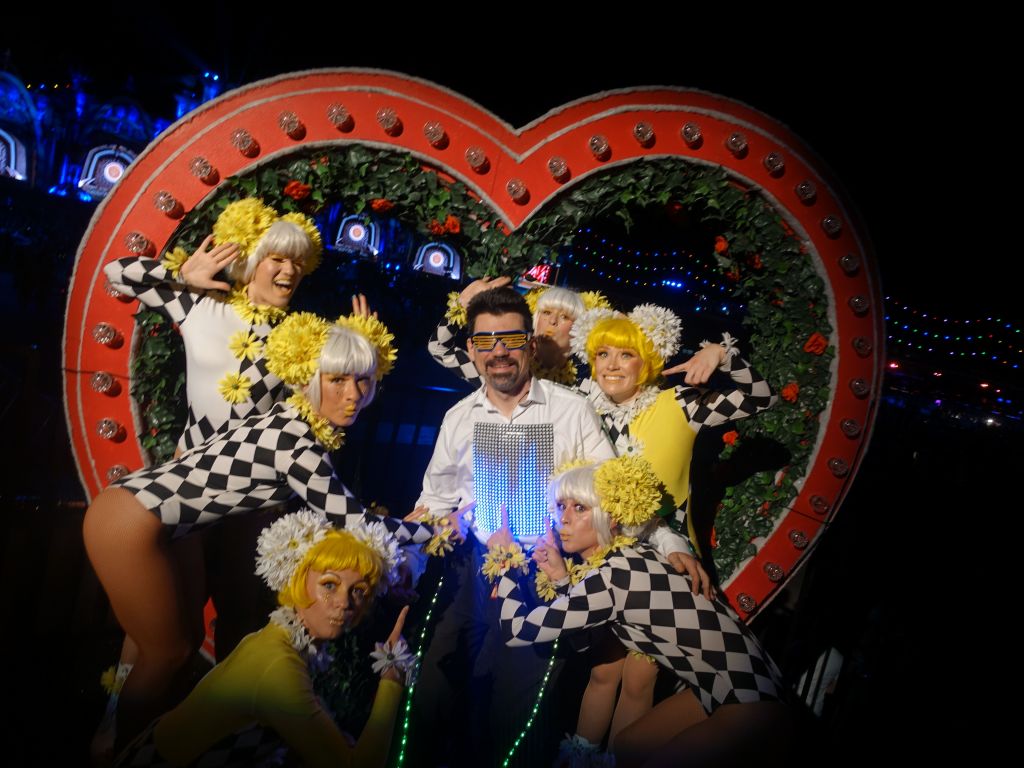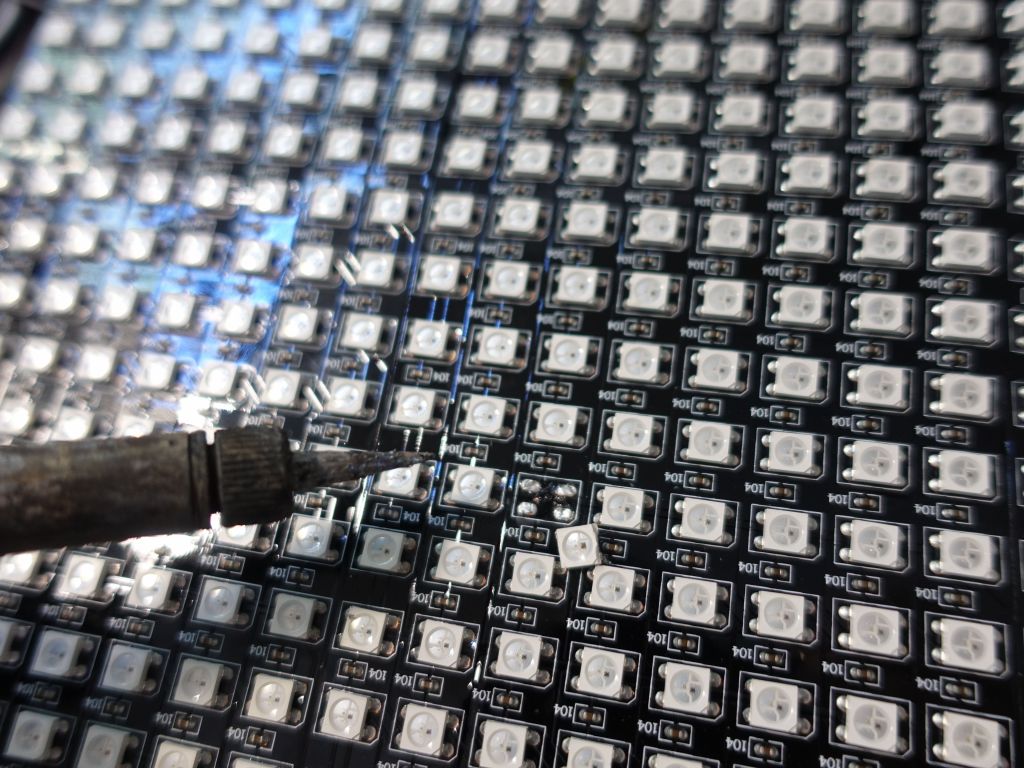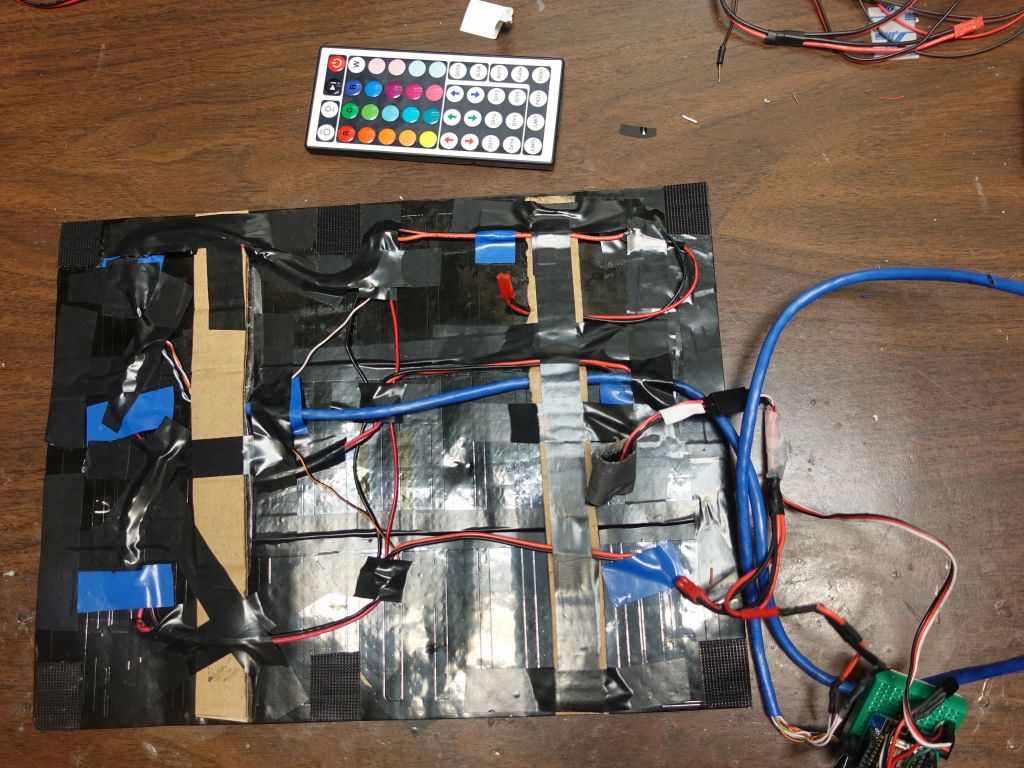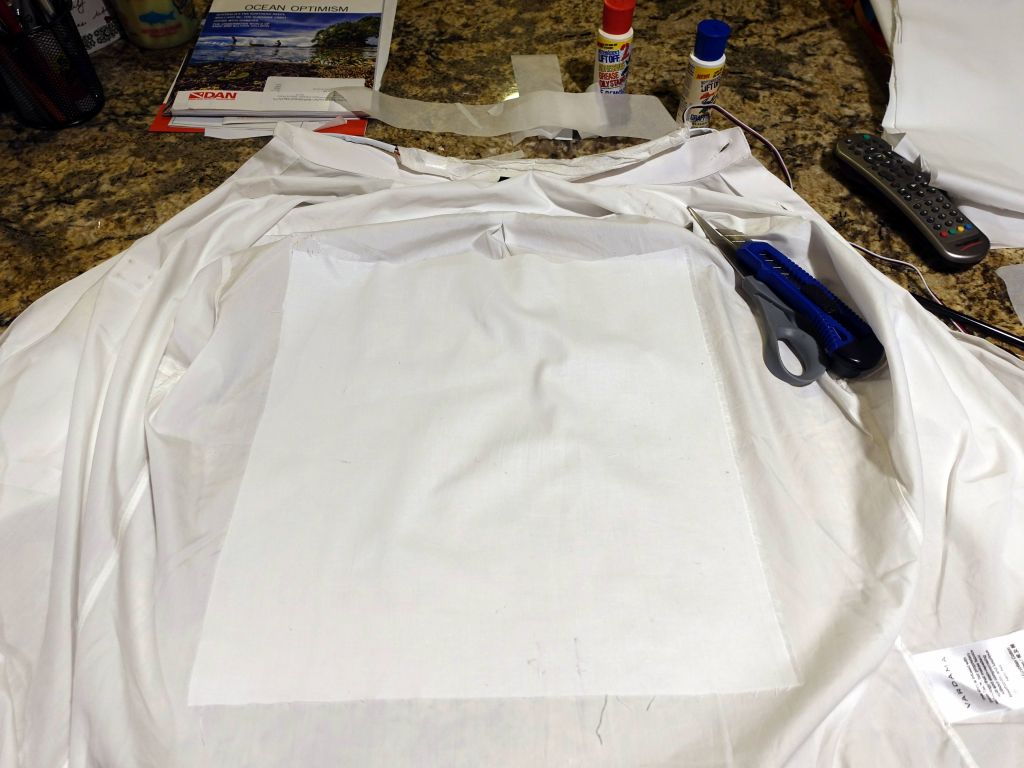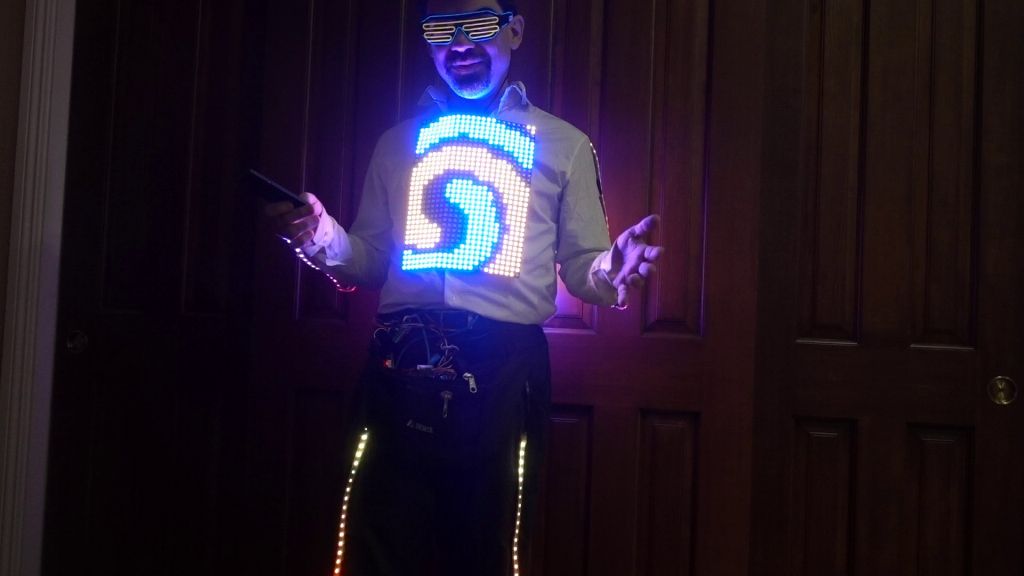I had been playing with Adafruit::NeoMatrix and figured it would be cool to have a NeoMatrix on my shirt (also it would be easier to remove a whole panel to wash the shirt). So, in the great tradition of yak shaving, I first decided that I should be able to use FastLED instead of Adafruit::Neopixel. This was mainly at the time because FastLED allows parallel output and therefore allows updating a screen by segmenting it in smaller pieces that are updated in parallel. With Adafruit::NeoMatrix, my 768 pixel panel would have taken about 30ms to refresh, or only 33 frames per second, which is not a lot. With FastLED, I was able to trivially segment it in 3 and get 10ms/100fps, which is a whole lot better for animations.
Turns out, switching to FastLED also gave me access to LEDMatrix, an alternate library which while lacking Adafruit::GFX primitives, offers another nice API including better text and basic sprite support. So, I started a port of Adafruit::NeoMatrix to FastLED and wrote FastLED::NeoMatrix. It was actually a non trivial port, which took much longer than I thought, but I got it working in the end:
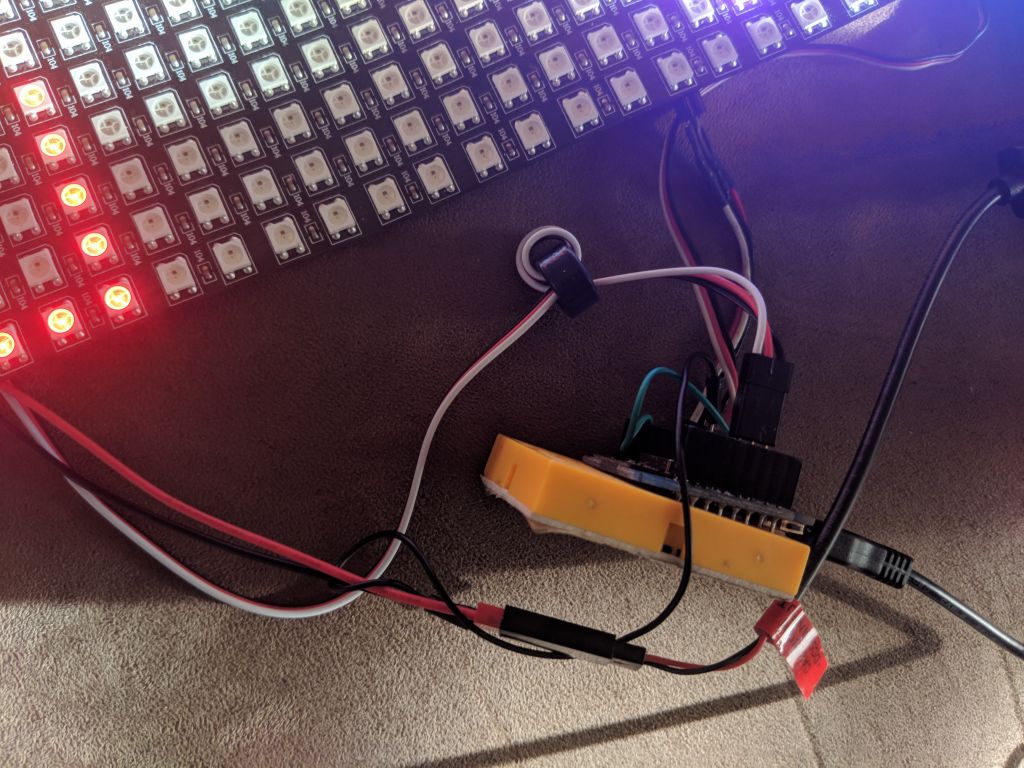
by then I was already able to display with 3 data lines, one for each 32x8 panel
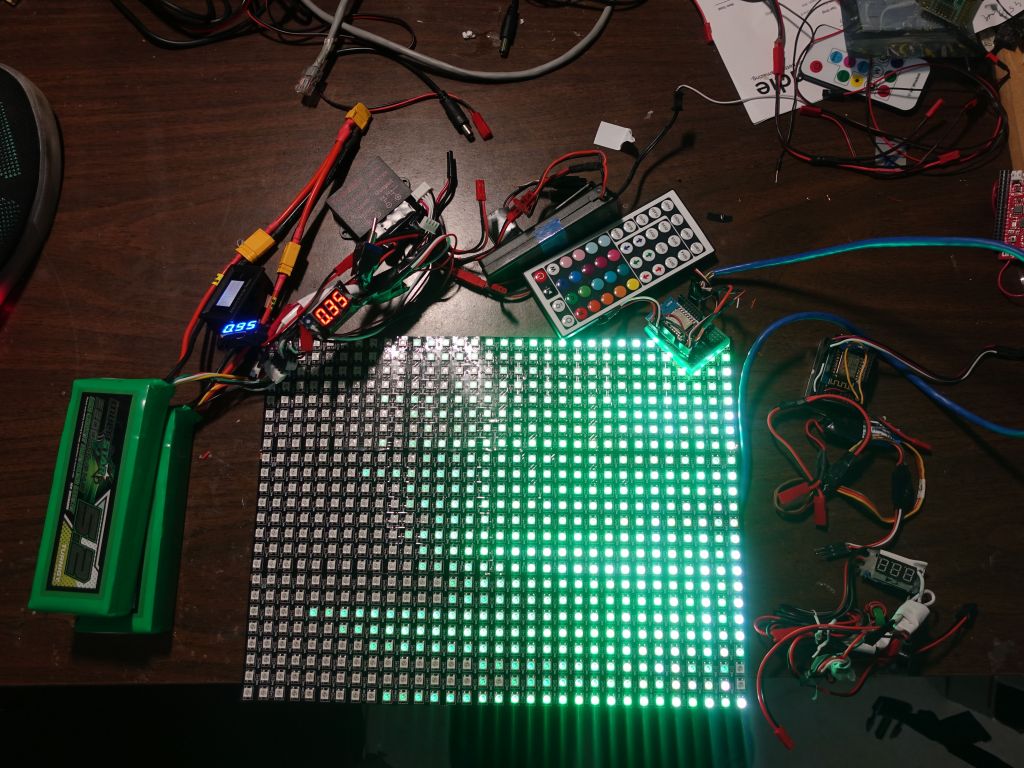
two 5Ah 16V lipos give about 160Wh, just enough to run 2 panels 10 to 12H
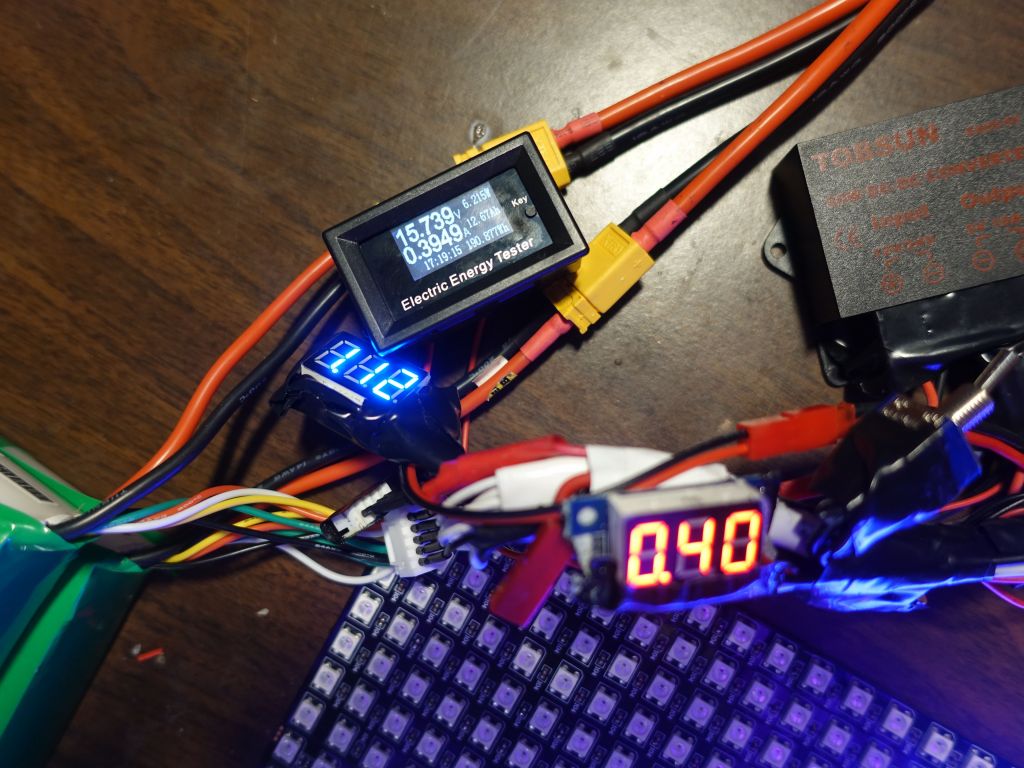
the fancy energy meter keeps track of how much time I used and how many Ah came out of the batteries. Useful to know how much time I have left. The blue meter is amps at 5V (after the power converter) and the red one amps at 16V (straight from the battery)
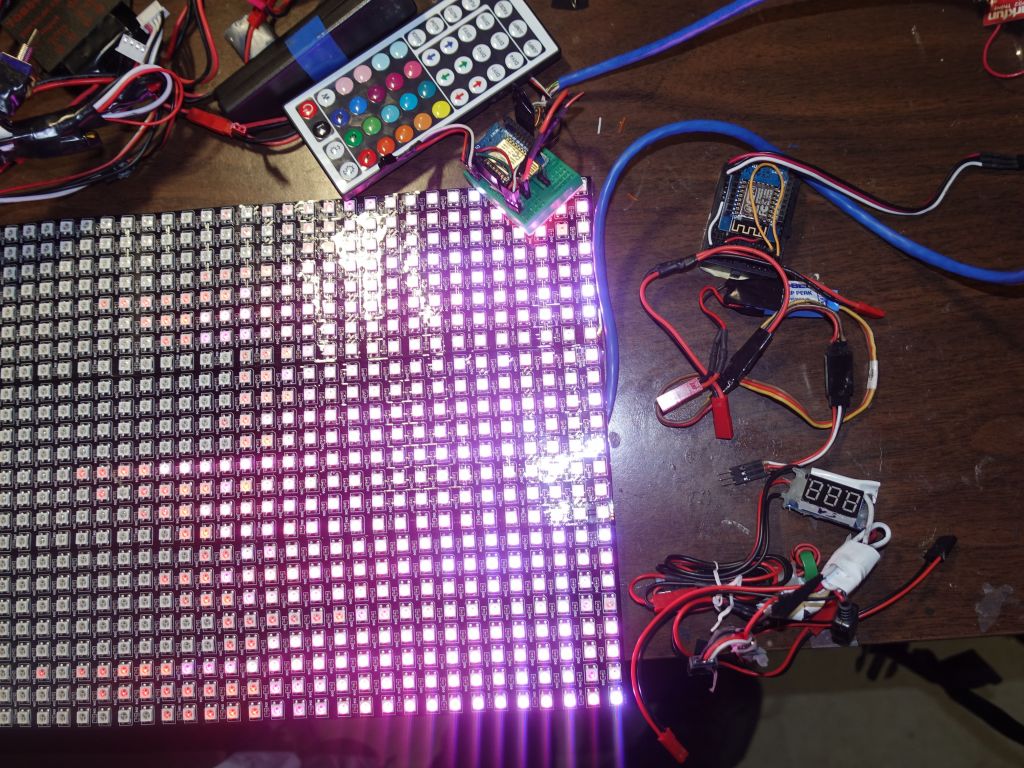
on the right, I have a backup ESP8266 if the main one fails, a backup BEC (5V converter) that's technically 10A capable but not meant to do more than 5A continous, and bottom right is my older 3A BEC with in line amp meter
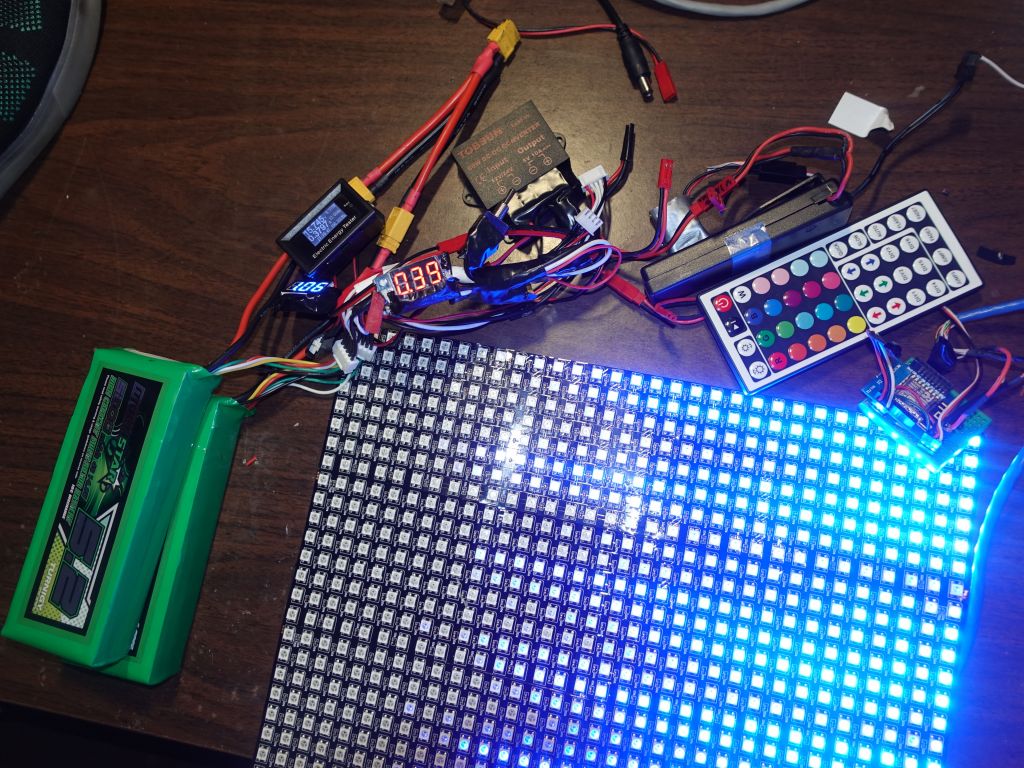
the new tobsun 5V converter is bulky but does 10A without issues

the cool part is that my back also has a panel inside the shirt that uses the shirt as a diffuser
